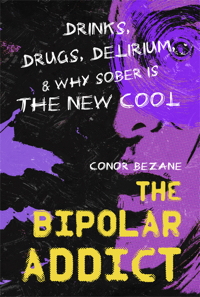Marilyn Monroe is one of the most iconic celebrities in American history. She’s right up there with Elvis Presley and Michael Jackson for her fame fingerprint. Her face is emblazoned in the pantheons of art history as the beautiful subject of many Andy Warhol screenprints. She was the ultimate sex symbol – Playboy magazine’s very first Playmate of the Month. And she left behind a treasure trove of classic films from Some Like It Hot to The Seven Year Itch to Gentlemen Prefer Blondes, in which she famously sang “Diamonds Are A Girl’s Best Friend,” a scene mimicked by Madonna in her “Material Girl” video.
Many have heard about her addiction problem, but few know that Marilyn Monroe was actually a bipolar addict.
“We knew that she was a manic depressive,” Monroe’s doctor, Hyman Engelberg, says in the 2001 documentary Marilyn Monroe: The Final Days. “That always meant that there were emotional problems and that she could have big swings in her moods.”
According to people who knew her, she was anything but the “dumb blonde” she played in Some Like It Hot. She read philosophy and poetry, even sometimes writing poetry, according to one biographer. However, offscreen, Marilyn Monroe lived a troubled life.
Biographer Anthony Summers interviewed many people in Monroe’s inner circle for his book Goddess: The Secret Lives of Marilyn Monroe, including Amy Greene, who lived with Marilyn in 1955, and said the icon used Dexamyl, an upper that contains amphetamine, a.k.a. speed. Monroe also reportedly took some drugs intravenously or colonically.
One of Monroe’s makeup artists is quoted in Summers’ book saying, “She used to come to the dressing room and put down a plastic bag, and you never saw so many pills in one bag. There would be uppers, downers, vitamins, and God knows what in the bag.”
In her autobiography, My Story, written with Ben Hecht, Monroe sheds some light on the perils of being a celebrity superstar and how it affected her moods.
“I had clothes, fame, money, a future, all the publicity I could dream of,” she writes. “I even had a few friends. And there was always a romance in the air. But instead of being happy over all these fairytale things that had happened to me I grew depressed and finally desperate. My life suddenly seemed as wrong and unbearable to me as it had in the days of my early despairs.”
Monroe indeed died in despair. In 1962, at the age of 36, Marilyn Monroe overdosed on barbiturates in what the coroner believed to be a “probable suicide.”
In a famous quote, Monroe said, “Imperfection is beauty, madness is genius and it’s better to be absolutely ridiculous than absolutely boring.”
Marilyn Monroe went down in history as the iconic blonde bombshell with a gold mine of talent. But was it fame that eventually swallowed her up? Her time in the limelight was brief like many bipolar stars including Kurt Cobain and Jimi Hendrix, who also died of an overdose on barbiturates. Monroe’s legacy is deep. Over her 16-year career, she made 29 films, which had a combined gross of more than $200 million at the box office. But it wasn’t the fame that killed her. It was her disease.
During the ‘50s and early ‘60s, Marilyn Monroe’s era, there was no treatment other than psychotherapy for bipolar disorder. The first drug made available to treat manic depression was lithium, which didn’t debut until 1972. Monroe controlled her moods with uppers and downers. Was Monroe’s death her own fault? It was addiction – compounded by her bipolar – that ultimately destroyed the icon. Count us fortunate to nowadays have so many antidepressants, antipsychotics, and mood stabilizers to treat our disease. Monroe wasn’t so lucky.








